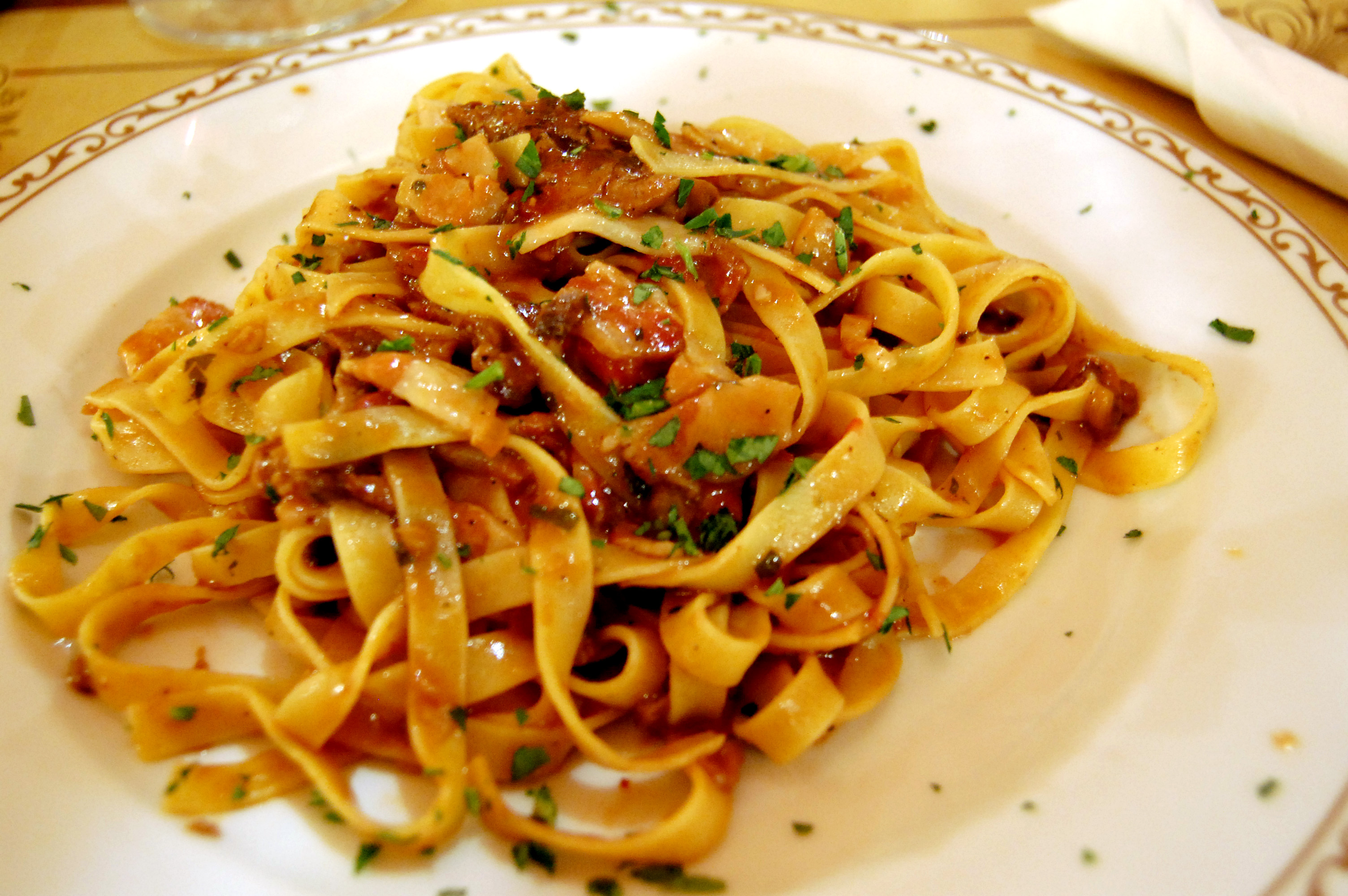Il verbo “piacere”
The verb to like
The verb piacere is analogous to the verb to like in English, but it really means to be pleasing.
In English one says: I like risotto. In Italian one says: Mi piace il risotto, which literally means Risotto is pleasing to me. It is a different way of expressing the same idea.
- The two most common forms of the verb piacere in the present tense are piace and piacciono.
- piace + singular noun → Mi piace la bruschetta.
- piace + one or more infinitives → Mi piace mangiare la bruschetta.
- piacciono + plural noun → Mi piacciono le tagliatelle.


Mi piace la bruschetta Mi piacciono le tagliatelle
- When using the verb piacere, you must use the following pronouns to express the person(s) to whom a thing is pleasing:
| mi or a me = to me | ci or a noi = to us |
| ti or a te = to you (informal) | vi or a voi = to you (plural) |
| gli or a lui = to him | gli or a loro = to them |
| le or a lei = to her | |
| Le or a Lei = to you (formal) |
- When using the name of the person, you must use a + person’s name, i.e. A Paolo piace la carne [Paolo likes meat]. Later in the course we will also learn to express more complex ideas such as My parents like…
- Unlike in English, you must use definite articles when speaking of things you like or don’t like, i.e. Mi piace la pasta [I like pasta] or Ti piacciono i tortellini? [Do you like tortellini?]
- To make a negative statement, simply place non before the pronoun, i.e. non mi piace la carne or non ci piacciono le linguine. BUT: when using the forms a me, a te, a lui, etc. the word order changes: a me non piace la carne and a noi non piacciono le linguine.
- To say “I like it,” you simply say Mi piace. To say “I like them,” you simply say Mi piacciono.
